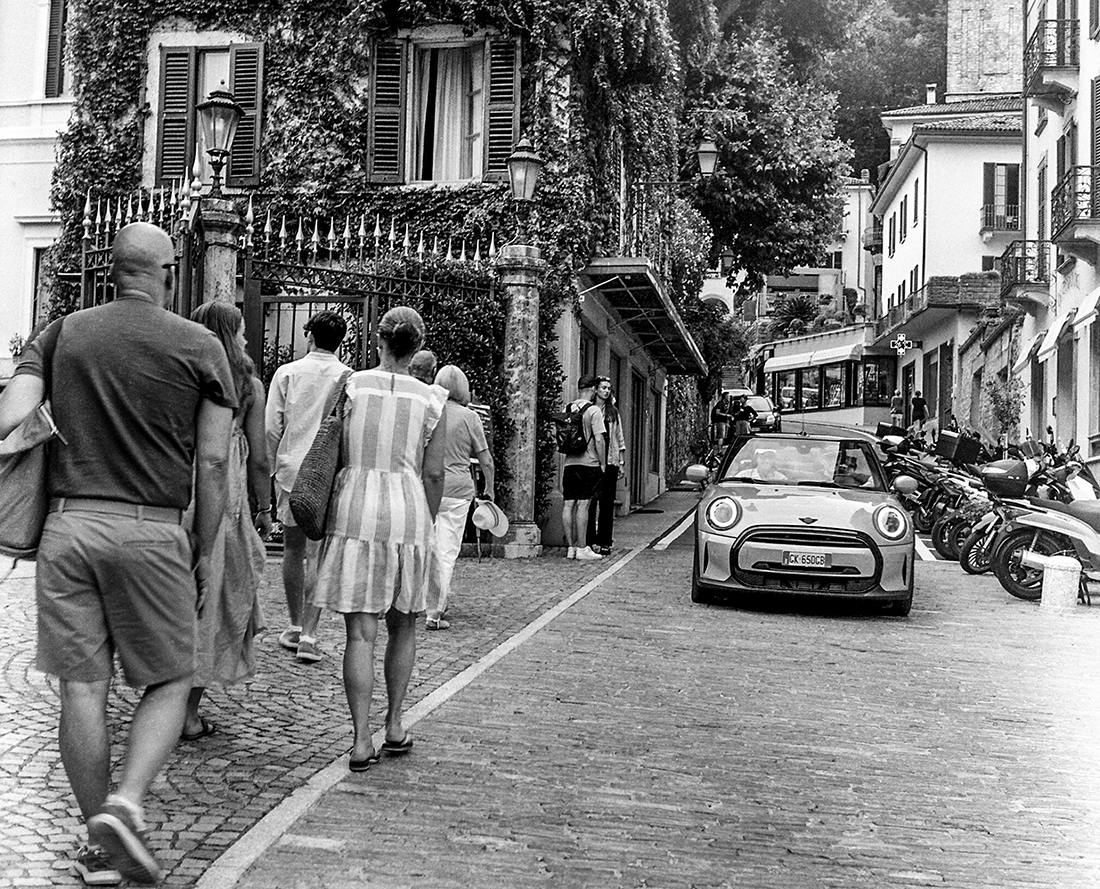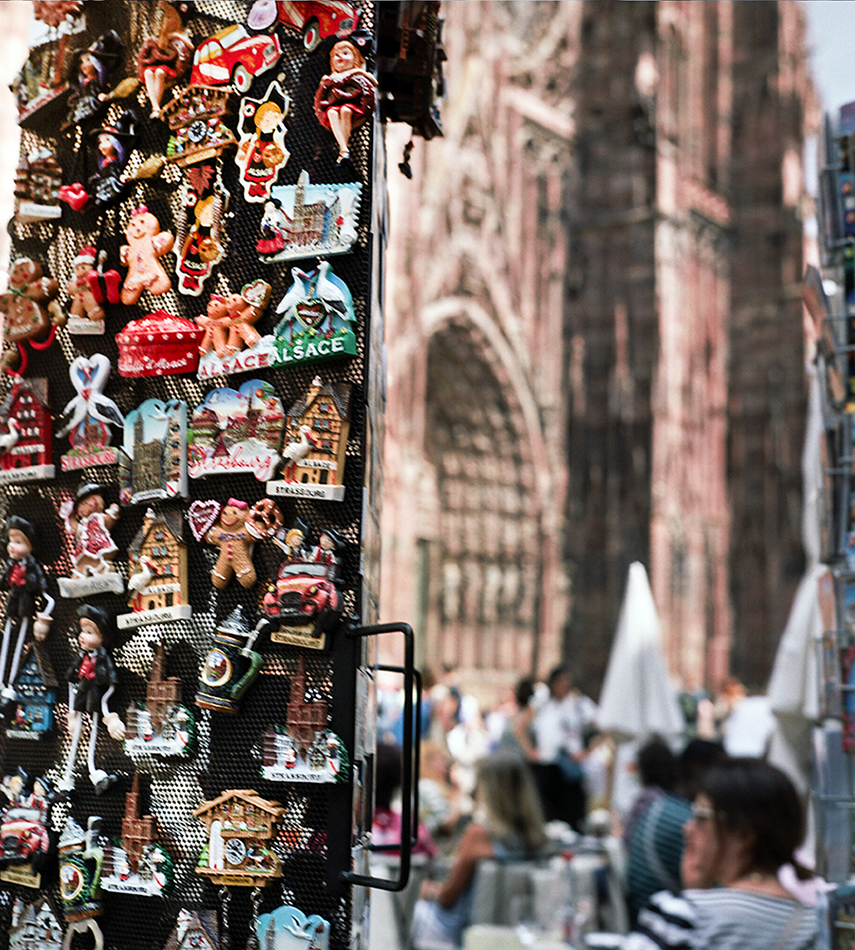
Celebrating 30 years of marriage, Amy and I found ourselves on Italy’s Lake Como this summer, heading south along an ancient stretch of shore that will give you whiplash.
Here a castle. There a castle. The Swiss Alps on one side. The island of lepers on the other side. Winston Churchill stayed at that castle. King Such and Such summered in that one.
Here, villas and castles and cathedrals from the 15th and 16th centuries mix with what tour guides call “modern s***”—opulent buildings from the 18th and 19th centuries.
But the biggest attraction on this Como excursion is an 18th century villa that, frankly, could use a new roof. George and Amal Clooney live here, prompting necks to crane to the point of crackling cartilage.
Clooney purchased the house in 2002 after—per tour guides—his motorcycle broke down in the neighborhood.
Since then, area property values have soared. Tourists flock to the coffee shops rumored to be Clooney haunts. They are as much a part of the Como experience as the narrow cobblestone streets, gelato and centuries-old cathedrals so grand and gothic they make your knees weak.
Okay, now that I think about it, gelato is much bigger than Clooney in northeast Italy.
“No more talking,” our guide, Katia, said at one point. “It’s gelato time.”
And it was. Then it was gelato time again. Late afternoon? There’s a gelato shop at the top of hill, next to the 92-year-old woman who refuses to sell her worth-millions villa because of the blood, sweat and tears her late husband—once a poor man—put into it. She walks the steep streets, smiling at tourists and telling her story to those who inquire about the purple bougainvillea spilling over her balcony.
I am rambling here, trying to find an entry point into a column about the lighter side of Europe—the areas we visited, anyway.
Let me back up. This was the trip of a lifetime, and we apologize to our daughters for the resulting lack of inheritance.
We traveled from Italy to Switzerland to France to Germany to The Netherlands. We climbed inside windmills, lit candles in cathedrals, ate bratwurst along the Rhine and wallowed in gallons of gelato.
I also took notes. When tour guides talk about mermaid statues banished to the Bronx because mermaid boobs offended Italians, writers buy notebooks.
The following are notes and nuggets. It reads like an idiot’s guide to Europe and has little practical value. And, as it turns out, there are dumb questions.
Amid the passion and preservation, Europe’s rich history also includes plenty of naughty bits, blood, revenge, mistresses, mistresses with guns and general debauchery.
Public bathrooms are not big in Europe. When boatloads of tourists stop in a village, they are advised to “find a bar.” That is to say, the bars have bathrooms, but you will need to (1) pay to use them or (2) buy a drink for the privilege of using them. And drinking, of course, leads to more peeing, which leads to more bars. Tourism toilets are an industry all to themselves.
Many cathedrals and ancient sites dump tourists out near cheap souvenir stores. In Cologne, Germany, for example, you can see the Shrine of Three Kings (believed to the bones of the three wisemen) and then walk 30 yards to buy “Germany” refrigerator magnets shaped like Jack Daniels labels.

And while I poo-poo those tacky souvenirs alongside the 13th Century Cologne Cathedral, I could not get enough of them. I bought a metric ton of stylish European T-shirts made in China.
“I’m afraid you have to like sauerkraut to enter Strasbourg,” a French tour guide told us. Then an awkward pause. “That was a joke.”
NEVER—and I stress all caps here—cut your pasta or twirl it with a spoon in Italy.
And NEVER drink wine with pizza. I am not sure why, but it is clear something terrible will happen to you if you drink wine with pizza. This is why I stick with beer for every meal. Safety first.
Europeans bury people everywhere (already-dead people, of course).
Pigeons are the size of roosters.
Storks are a thing in France. Real and rooftop.
Naps are king. Stores close during the afternoon hours. Residents often eat dinner after 9pm. This is tough for American empty nesters, who are usually comatose in front of Netflix at 8:45pm.
In many European towns, there are more bikes than cars—or people for that matter. Tourists with their eyes on cathedral spires and T-shirt racks are in constant peril. It is not that cyclists want to kill you, they just want you out of their way, dead or alive. “You don’t find a lot of nice bicycle drivers,” warned a tour guide dubbed Herman the German.
Also said by Herman the German upon answering a question about a convent: “They do nun stuff.”
There are plenty of cars, too. Those vehicles also will merrily maim you on narrow streets lined with gelato shops that make you a larger target for narrow streets.
Look out for architectural revenge, especially in Germany.
And watch for ancient building décor that features a mooner, pooper, tongue-wagging pirate, a spitting orphan and a gnomish concrete man, who, um, … how to put this … contorts in a pleasurable … well, dogs can do it, but humans cannot. Nor should they.
The pervert gnome was a subtle snub to the bishops also adorning this gothic masterpiece. If American history had more mooning pervert gnomes, my GPA would have been higher.
There are many other notes in my notebook, but I cannot read them, I guess because I had too much beer with my pizza. But what strikes me most about Europe is how much its residents savor (and know) their own history—good, bad, naughty and tragic.
Imagine going to a 700-year-old church with corpses in the walls. Every statue on every square inch of every public space has a story with cultural significance, sometimes with beheadings or ticked-off gnomes. T-shirts dating back the 2010s scream of European pride: “My dad went to a cathedral stocked with dead bishops, and all I got was this lousy T-shirt.”
There’s also George Clooney and gelato. So, indulge, listen carefully, savor the food, examine the architecture, obey the pasta laws, take a nap and then set a course for the rarest, most beloved attraction in Europe: a bathroom. OS






